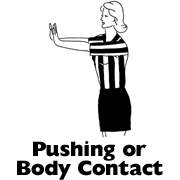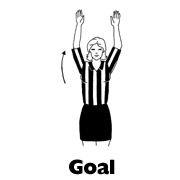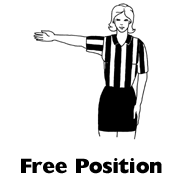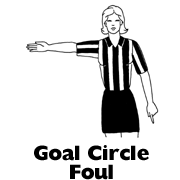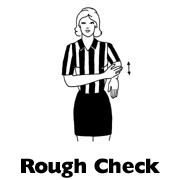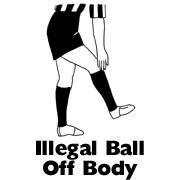Women’s lacrosse teams use netted sticks to carry, throw, and shoot a ball along a field in an effort to score goals. A goal counts as one point and is scored when the ball completely crosses the opposing goal line between the posts and under the crossbar. The team scoring the greater number of goals in the allotted time wins the game.
What's Needed?
Lacrosse stick, solid rubber ball, team uniform with kilt or shorts, gloves, sneakers or cleats, and mouth guard. (Some leagues require protective eye- wear.) Goalkeepers wear extra padding.
How Long Is A Game?
Generally, a game is divided into two twenty-five minute halves, with a ten-minute break at halftime. Each half begins at the center circle with a “draw” between two opposing players. Team captains flip a coin to choose playing sides and teams switch sides at halftime. If a game ends with the score even, it is a tie. Some leagues may decide the result of a tie by playing overtime periods of sudden death; the team scoring first wins.
Stand And Draw!
The Draw - Takes place between opposing players in the center circle to start each half and after every goal. The two centers stand opposite each other across the center line, holding their sticks waist high with the stick pockets touching back-to-back. The referee places the ball between the netting of the stick pockets. When the signal is given to start, each player pulls her stick upwards and backwards to release the ball into the air. Players then attempt to gain possession of the ball. Prior to the start of the draw, all other players on the field must remain completely outside the center circle. If a violation of the draw occurs twice, a referee will restart play using a “throw.”
Throw - Used in a variety of situations when play has been stopped, such as when two opposing fouls occur simultaneously. On a throw, two opposing players stand side-by-side, three feet apart. The umpire throws the ball up in the air between the two players who then move to gain possession and control of the ball.
Stand - Anytime the whistle is blown to stop action, all players must stop moving and stand where they are on the field. They have to remain standing in their stationary positions until play restarts or is redirected by an official.
Out of Play - Although there are no set boundary lines in women’s lacrosse, the ball can still go out-of-bounds if it either rolls or is carried beyond an agreed upon boundary. When this occurs, the official blows the whistle and players must stand where they are on the field. Regardless of which player sent the ball out of play, the player nearest to the ball (when it went out) gets possession.
Trapped Ball - If the ball gets caught in a goalie’s pads or clothing or in the netting of the goal itself, the ball is placed in the goalie’s stick and play resumes. However, if the ball gets trapped in another fielder’s clothes or her lacrosse stick, a throw is used to restart play.
Free Position - Awarded to a player after a major or minor foul has been committed anywhere on the field. The free position is always taken at least eight meters from the crease. On a major foul all other players must stand at least four meters behind the player taking the free position, while on a minor foul they may stand four meters to the side. The official places the ball in the stick pocket of the player taking the free position, who then passes, shoots, or runs with the ball.
Foul Play!
A violation of the rules results in a major or minor foul, awarding a free position to the fouled player. It is a major foul when a player charges, pushes, trips, blocks, or makes physical contact with an opponent; “slashes” an opposing ballcarrier; commits a “shooting space violation;” or invades the body space of an opposing player, such as touching her stick to that player’s body. A minor foul is called if a player uses her stick or foot to shield a ground ball; if a player kicks the ball or touches it with her hands (except for the goalie inside her crease). Also, no part of a player’s body or stick may enter the crease while the goalie is in her position there.

Did You Know That?
The origin of women’s lacrosse can be traced back to the Indians of North America, who played a form of the men’s game in their preparation for battle. However, it was not until the mid-19th century that the English first played a unique style of a stick and ball game solely for women. Competing girls’ schools began playing this modern game in the 1860’s. Many of the general rules of play in those first games resemble those used today.

